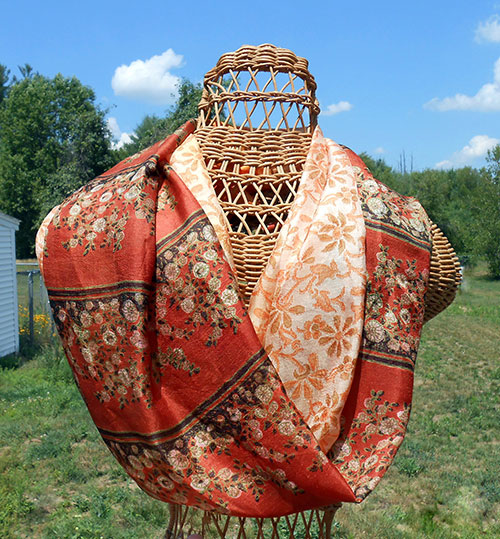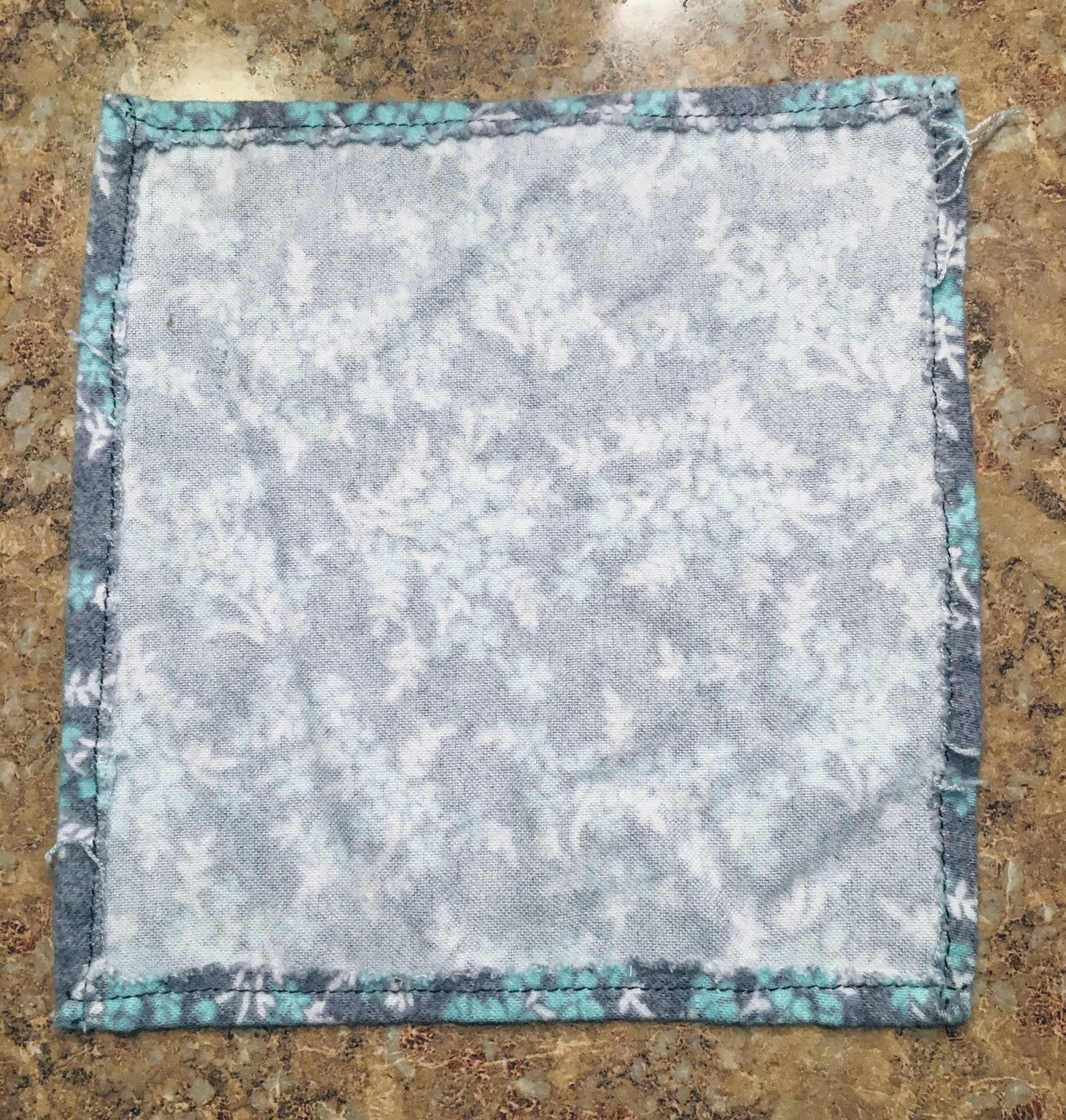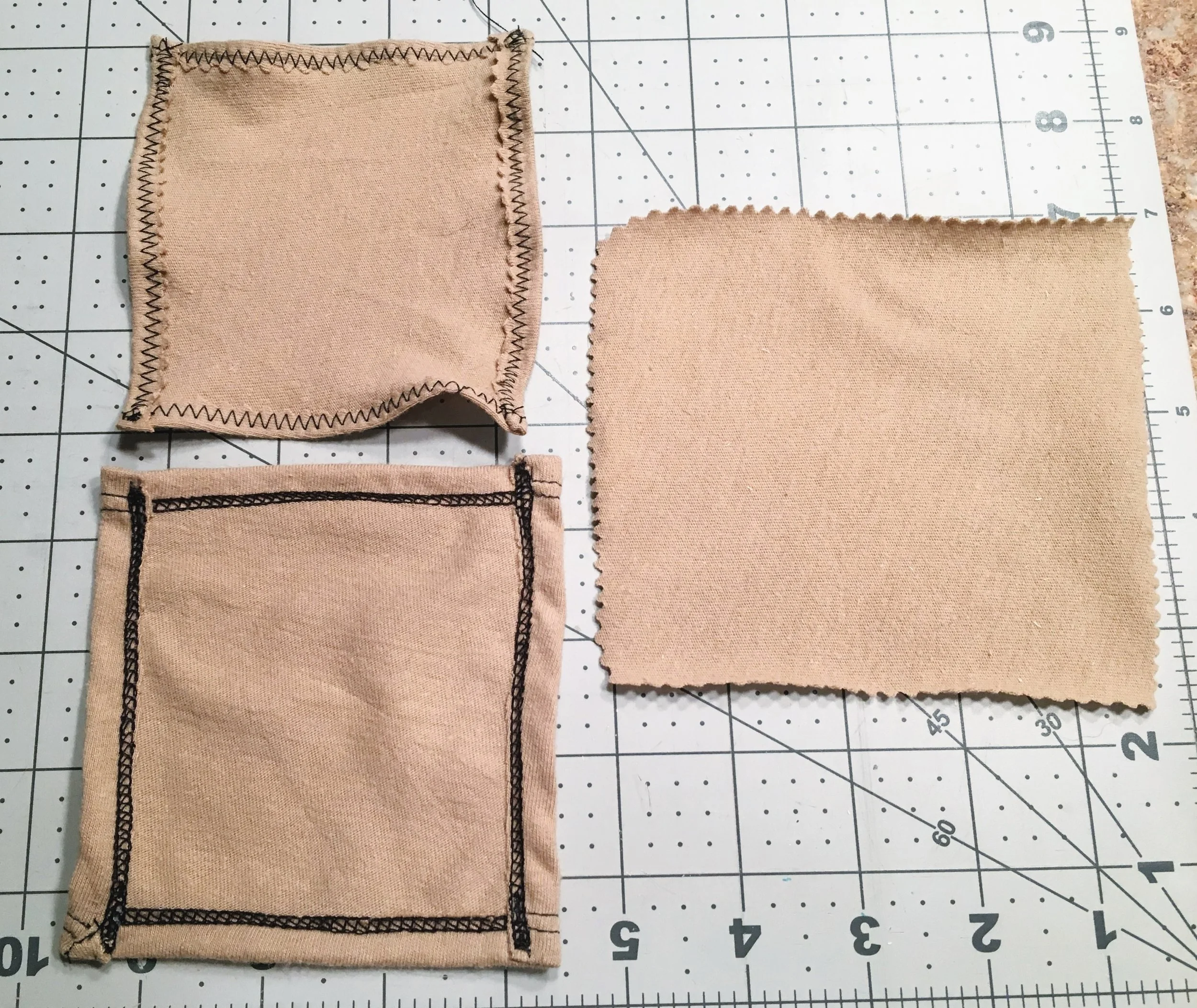Easy DIY Zero Waste Handkerchief
Do you want to reduce your spending and make something environmentally friendly? In this post, I’ll show you how to make some easy zero waste handkerchiefs that will help you stop buying disposable paper tissues. It’s a quick, no-sew project (with a sewing option provided if you prefer to hem them).
Disclosure: This post contains affiliate links, which means I may receive a percentage if you make a purchase using these links. This won’t cost anything extra to you. See my privacy policy for more details.
Why Use Fabric Handkerchiefs?
I don’t have a zero waste household, but I’m trying to implement more environmentally-friendly habits, like using my own reusable shopping bags, using fabric produce bags, switching to glass straws instead of plastic, mending, and reducing waste wherever I can, as well as recycling and reusing things. I figured that making fabric hankies was a good way to continue this trend.
In terms of environmental impact, you have to think about the resources used to produce your fabric as well as the water consumed in washing and rewashing your reusable tissues.
One study found that the resources needed to create a reusable cotton tote bags had an environmental impact that was much bigger than that needed to create a plastic bag. However, you can reuse the cotton tote bag many more times than plastic bags, and reusable items won’t take up as much space in landfills or in the ocean. But you have to reuse the cotton bag a lot to offset the initial environmental impact.
The fashion and textile industries create a lot of waste, so you could try to find used fabric for these handkerchiefs, and I’ve posted some ways to find cheap fabric at thrift stores and other places. However, I ended up buying new fabric, partly because I plan to reuse them a lot and partly because I had particular fabrics in mind that I wanted to use.
Overall, I think using fabric handkerchiefs is environmentally friendly, as long as you reuse them consistently. I’ve been using mine for months, and they don’t show any signs of wear, so I think I’ll be able to reuse them for years to come.
I don’t think that these add much, if anything, to the amount of laundry I do. I haven’t noticed an uptick in loads of laundry at all. These hankies are so small, they just fill in the nooks and crannies in an otherwise normal load.
What Kind of Fabric to Use?
I tried a couple of different fabrics for this. I have some vintage handkerchiefs, which are mostly cotton and linen. I didn’t want to have to do the elaborate edging on them, and although I have a serger, I also didn’t want to have to put a rolled hem each one individually because that seemed like it would be time consuming.
You could also just buy a lot of vintage handkerchiefs and use them as-is. I was worried that the pretty trims would get snagged in the laundry and not hold up to repeated washes. I decided to use cotton knit and cotton flannel fabric. Both are very soft materials that will hold up to a lot of washing.
I got all of my fabric at Joann Fabrics. See links below to purchase the same fabrics:
Cut
I used a regular tissue as a guide and cut these 8” x 8”. Apparently, I hadn’t pre-shrunk the fabric, so these turned out a little smaller when I washed them, but overall, the size was fine. When I made more, I used the smaller size of 8” x 6” because I preferred it to the larger size.
I only use these once before putting them in the wash, so I don’t want a huge piece of fabric going to waste. (I have seen some people use hankies and store them away in a pocket for later use, but that seems a little gross.)
Option 1: No Sew
For the first batch of hankies, I pinked all of the edges to finish them (see my post on the Singer hand crank pinker). For my second batch, I just cut the edges with a rotary cutter and left them straight.
Although I really enjoy using the hand crank pinker, it ended up being unnecessary for the knit fabric. The pile on the right shows what they looked like before being washed, and the pile on the left shows afterward. They’re still usable, but they are a little frayed.
The straight-cut hankies held up better than the pinked ones and didn’t fray at all, so I wouldn’t recommend pinking a knit fabric. Both samples below have been washed.
Option 2: Sew
The cotton flannel hankies, however, unraveled in the wash to the point where they really needed to be hemmed. The stack on the left hasn’t been washed, while the one on the right has been.
I just folded up each side and sewed a simple hem. I didn’t bother folding the pinked edge under—it should stop unraveling when it meets the line of stitches.
Other Experiments
Before making the hankies, I created some small cleaning pads out of an old t-shirt. I tried three different finishing techniques: zigzag stitch (top left), coverstitch (bottom left), and pinking (right). I cut them all to the same size of 5” x 5” initially, so you can see how each finishing technique makes you lose a little bit of fabric real estate.
All of these samples have been washed, so they all held up pretty well, and the pinked fabric didn’t fray at all. Knowing what I now know about knit fabric, I probably wouldn’t even bother to pink the edges, making the entire 5” x 5” square usable.
This reinforces my preference for knit fabric on this type of project. It’s less work because you don’t have to finish the edges, and you don’t lose any of your yardage to hemming.
How Do They Hold Up?
I ended up liking the cotton knit hankies better than the cotton flannel for a few reasons. I like the the weight of the cotton knit fabric, the softness of it, and the fact that it doesn’t need to be sewn. It’s faster and easier to make more when I need them. They hold up well in the wash and I haven’t had to use a regular paper tissue in months now.
I made three yards worth of hankies, and I haven’t run out of them since starting to use them. I do laundry about once a week and I just toss them all in with a regular load. They’re small enough that they don’t add to the number of loads of laundry I need to do. It takes a little bit of time to sort them out from the rest of the laundry, but that’s really the only drawback.
While the cotton flannel was very soft, too, it was a little too thick for me, and the pinked edges unraveled in the wash, so they all have to be sewn. I’ve been slowly finishing my pile of un-hemmed flannel hankies to use as cleaning rags or small un-paper towels. These might work for someone who likes a thicker tissue, though.
Want more Environmentally Friendly Crafts?
See my Pinterest board on Eco-Friendly Crafting:
And here’s a good piece by the Creative Curator about the importance of zero waste fashion and sewing.




















